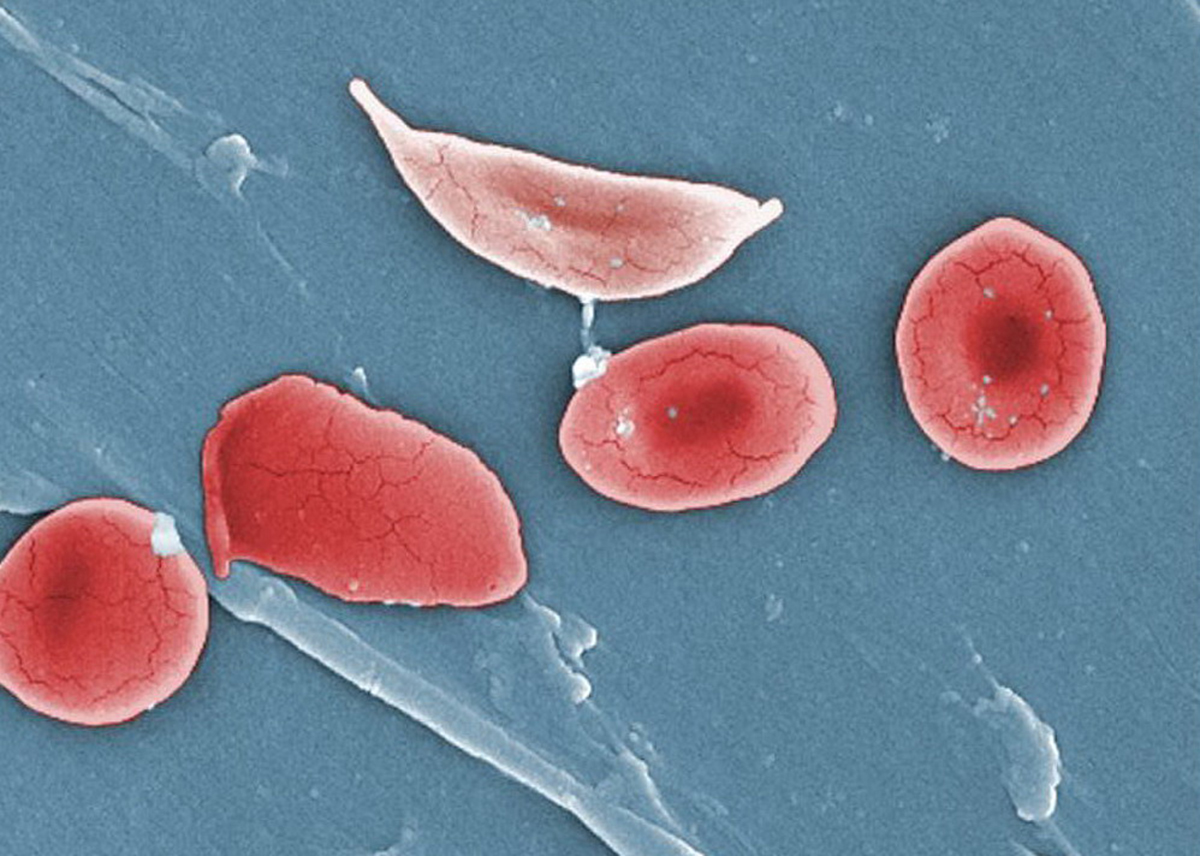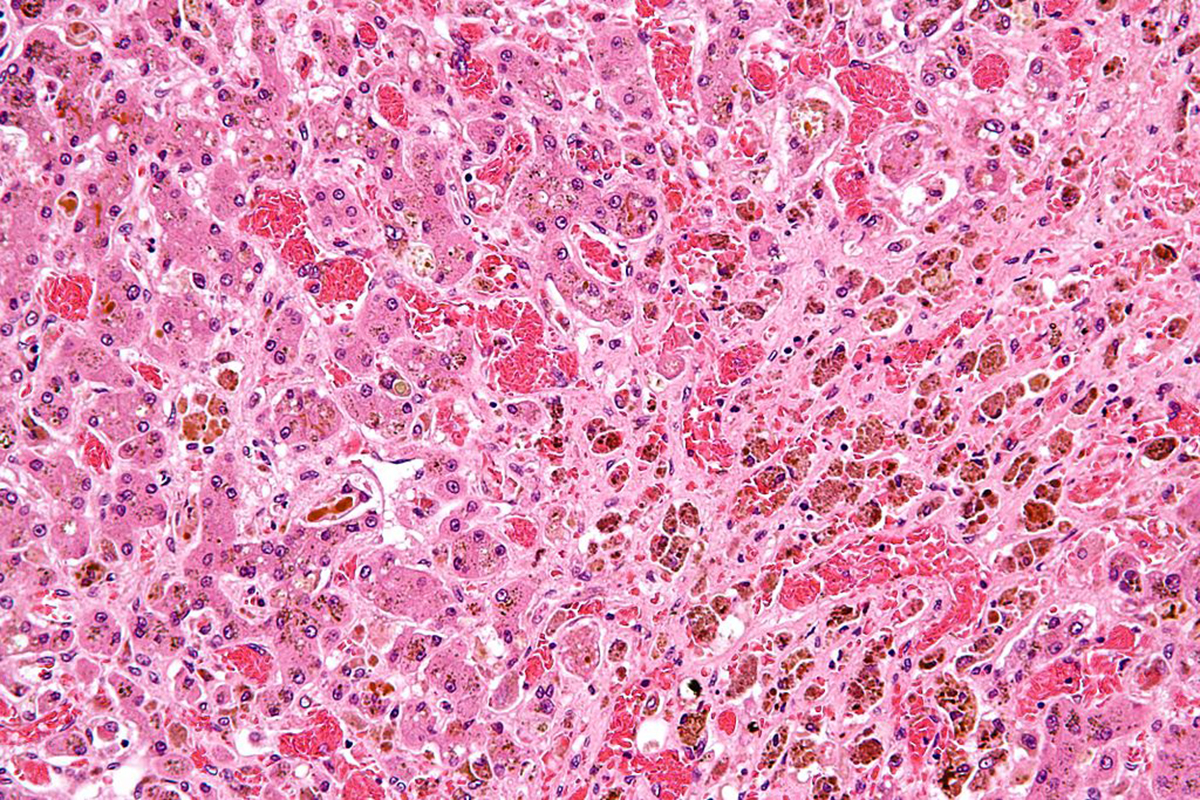One out of every 500 African-American births. One out of every 36,000 Hispanic-American births. Approximately 90 to 100 thousand Americans suffer from the pain, genetic disorder known as sickle cell disease. The rate of those carrying the sickle cell disease trait is even higher, with 1 in 12 African-Americans inheriting the sickle cell gene from one parent. Yet despite these high rates, people with sickle cell disease are less likely to have access to comprehensive care than those with other genetic disorders, such as cystic fibrosis and hemophilia. What is sickle cell disease? How can those diagnosed obtain the best care possible?

An Inherited Disorder
Sickle cell disease is an autosomal recessive trait that affects the hemoglobin in red blood cells. An autosomal recessive disorder means that two copies of the gene, one from each parent, must be passed down for the disease to develop in a child. If only one gene is passed to the child, he would be a carrier, but would have no symptoms. With one out of 12 African Americans as carriers, it is easy to see why this community in particular is hardest hit by sickle cell disease.
Sickled Cells
The disease gets its name from the appearance of the red blood cells of those affected. Instead of the usual doughnut-like shape, the red blood cells of those with sickle cell disease become hard, sticky, and c-shaped. These changes allow the cells to clump together and impede blood flow throughout the body. The deformed cells also die more quickly. Normal red blood cells have an average lifespan of 120 days and are constantly replenished by the bone marrow.
The Symptoms of Sickle Cell Disease
The chronic anemia caused by the shortened lifespan of sickled cells means that the person affected is constantly low on oxygen. Normal red blood cells combine oxygen with hemoglobin to transport around the body. With abnormal hemoglobin, those with sickle cell disease display multiple symptoms of hypoxia, or oxygen deficiency, such as pale skin, weakness, and fatigue. The high levels of red blood cell destruction also can result in jaundice as the sickled cells fragment and release bilirubin into the blood stream. Jaundice is evident in the yellowing of the skin, although in those with darker complexions it is more easily seen as yellowing of the sclera, or white part of the eye.
It is the shape of the cells themselves, however, that can lead to the most severe symptoms of sickle cell disease. Known as a sickle cell crisis, the clumping of the abnormal red blood cells and their fragmentation results in occlusion of the veins and arteries. This blocking of the small blood vessels can cause sudden, intense pain that can last anywhere from hours to days or even longer. While sickle cell disease is usually managed by a person's family practice doctor, the crises are the top reason why people seek help from a hospital emergency room.
Read More: National Aplastic Anemia and MDS Awareness Week
Getting Through a Crisis
When a person develops a sickle cell crisis, the symptoms are severe. The normal pallor of a person with sickle cell disease becomes even more pronounced, with pale lips, tongue, palms of the hands, and nail beds. It's difficult to wake him and, even when awake, he is listless and lethargic. He is irritable, understandable considering that a crisis involves severe pain. A high temperature, one over 104 degrees Fahrenheit, is present for at least two days and sometimes more.
Treatment
There are no certain cures for sickle cell disease, but there are treatments available to ameliorate the effects. Mild pain is managed with increased fluids, over the counter pain medications, and heating pads. Cold exacerbates the condition, so keeping warm is vital. Oxygen therapy may be given if the blood's oxygen content is very low. If infection is present, antibiotics may also be administered.

Those with the most severe forms of sickle cell disease find some improvement through taking hydroxyurea, a medication that encourages the production of fetal hemoglobin. Fetal hemoglobin helps prevent the sickling of red blood cells, reduces anemia, and can minimize the frequency of sickle cell crises, but it also inhibits white blood cell production. The decrease in white blood cells increases a person's chance of infection.
Preventing Complications
Consistent medical care is vital for people with sickle cell disease and must begin as soon as a child is diagnosed. There are numerous complications that can occur without good medical care. The clumping of sickled cells can cause strokes, so children should begin receiving routine ultrasounds of their heads at age 2. These scans allow doctors to determine whether blood flow to the brain is at all restricted. Children with high risk of stroke can be treated with routine blood transfusions to decrease this risk.
Frequent checkups with eye specialists knowledgeable of sickle cell disease are necessary to monitor eye health and determine if deterioration is occurring.
Most children who have been diagnosed receive a daily, prophylactic antibiotic until age 5, as well as folic acid to boost the production of red blood cells. The antibiotic, usually penicillin, helps to prevent infections that can trigger a severe crisis. Vaccines should be kept up to date as well.
Read More: Study: Iron Deficiency Anemia Increases The Risk Of Stroke
Hope for a Cure
Researchers continue to search for a cure for sickle cell disease. Stem cell and bone marrow transplants from closely related donors have shown some promise as treatment and some studies even showed that the transplants cured some children of the disease, but only after their own bone marrow was completely destroyed by a chemotherapy regimen. A gene therapy cure is also being sought in the hope that inserting normal genes into the bone marrow stem cells of patients with sickle cell disease will induce their bodies to create normal red blood cells.
It is vital for those with sickle cell disease to receive consistent care throughout their lives in order to minimize the life-altering effects of their condition. Comprehensive care at the same level as that provided to those with other genetic diseases like cystic fibrosis is essential for the treatment of a disease that so greatly affects a large portion of the African-American and Hispanic-American communities.
- Anemia, sickle cell. (2001). In Taber's Cyclopedic Medical Dictionary (pp.105-106, Edition 19). Philadelphia, PA: F. A. Davis Company.
- Photo courtesy of Anatomy & Physiology, Connexions Web site by Wikimedia Commons : en.wikipedia.org/wiki/File:1911_Sickle_Cells.jpg
- Photo courtesy of Nephron by Wikimedia Commons : commons.wikimedia.org/wiki/File:Sickle_cell_disease_and_cirrhosis_-_high_mag.jpg


Your thoughts on this